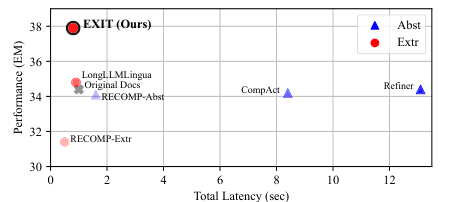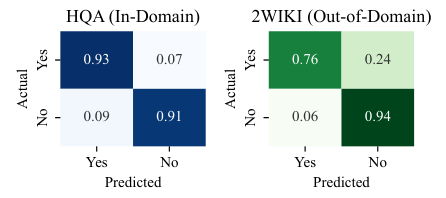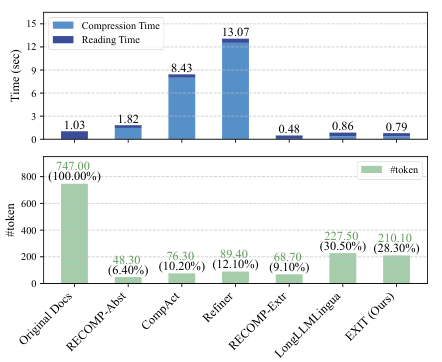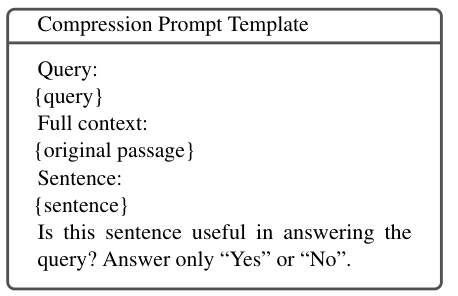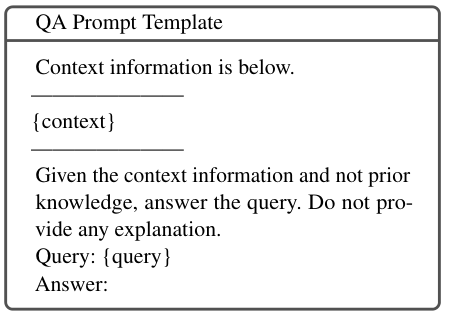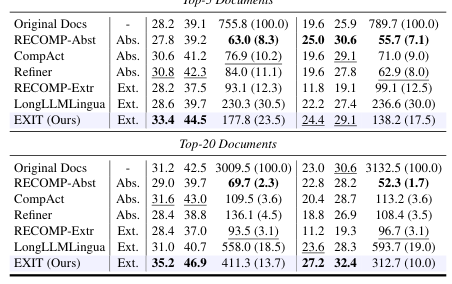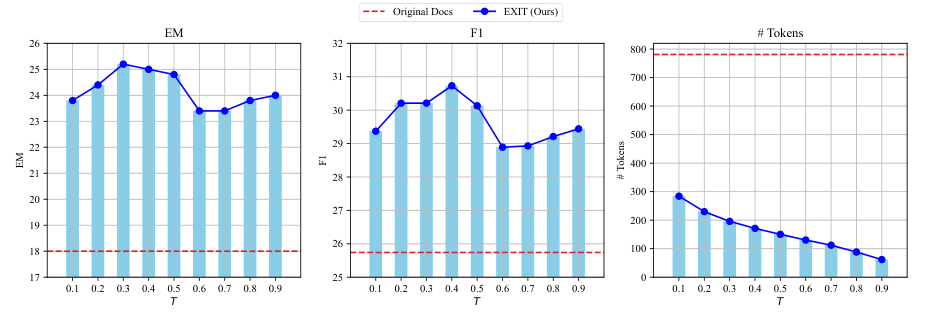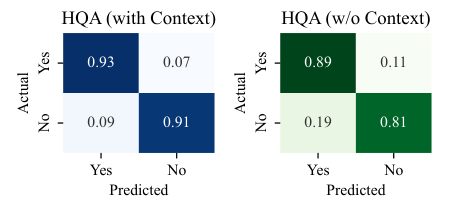EXIT: Context-Aware Extractive Compression for Enhancing Retrieval-Augmented Generation
Taeho Hwang, Sukmin Cho, Soyeong Jeong, Hoyun Song, SeungYoon Han, Jong C. Park·December 17, 2024
Summary
EXIT, an extractive context compression framework, enhances retrieval-augmented generation (RAG) in question answering (QA) by improving both effectiveness and efficiency. It classifies sentences from retrieved documents, preserving contextual dependencies, enabling parallelizable, context-aware extraction that adapts to query complexity and retrieval quality. Evaluations on QA tasks show EXIT surpasses existing compression methods and uncompressed baselines in accuracy while reducing inference time and token count. EXIT operates as a plug-and-play module, enhancing RAG pipelines without architectural modifications.
Introduction
Background
Overview of Question Answering (QA) systems
Importance of context in QA
Current challenges in retrieval-augmented generation (RAG)
Objective
Enhancing RAG in QA through context compression
Improving effectiveness and efficiency in QA systems
Method
Data Collection
Sources for retrieved documents
Data selection criteria for QA tasks
Data Preprocessing
Document representation techniques
Sentence extraction and classification process
Context-aware Extraction
Mechanism for preserving contextual dependencies
Adaptation to query complexity and retrieval quality
Parallelization
Strategies for parallel processing in context extraction
Benefits of parallelization in efficiency and scalability
Evaluation
Task Performance
Metrics for assessing accuracy and efficiency
Comparison with existing compression methods and uncompressed baselines
Inference Time and Token Count
Analysis of time reduction and token count minimization
Comparative Analysis
Detailed comparison of EXIT with state-of-the-art approaches
Highlighting improvements in accuracy, time, and token count
Implementation
Plug-and-Play Module
Compatibility with existing RAG pipelines
Minimal architectural requirements for integration
Enhancements to RAG Pipelines
Specific improvements in QA performance
Case studies demonstrating enhanced effectiveness
Conclusion
Summary of Contributions
Key innovations in context compression for QA
Future Directions
Potential areas for further research and development
Impact on QA Systems
Expected advancements in QA technology and applications
Basic info
papers
computation and language
information retrieval
artificial intelligence
Advanced features
